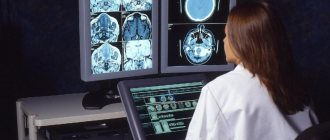The human body is an amazing combination of many organs, tissues, functions, chemical reactions, electrical impulses that allow a person to live, recognize and experience the world around him. Cognition occurs through influences on the human senses - light, sound, taste, smell, tactile and spatial perceptions. All this is the basis of human knowledge and existence in the world around him. And perceptual disorders, whatever they may be and for whatever reasons they occur, are a serious problem.
Perception: reality plus imagination
The fact that a person can perceive the world around him involves the senses and imagination. The knowledge that is obtained through vision, hearing, taste, tactile influence, smell and determining the position of the body in space is processed by special parts of the brain and, with the help of imagination and previously gained experience, become ideas about the world around us. Perception disorders in any area do not allow a person to obtain a holistic picture.
Typical distortions of people's perception and understanding
Using a logical method of understanding the characteristics of another person (reflection), we quite often perceive the personality, behavior, and actions of other people in a distorted and erroneous way. There are some factors that make it difficult to correctly perceive and evaluate people. The main ones are:
- The presence of predetermined attitudes, assessments, and beliefs that the observer has long before the process of perceiving and evaluating another person actually begins.
- The presence of already formed stereotypes, according to which the observed people are assigned to a certain category in advance and an attitude is formed that directs attention to the search for traits associated with it.
- The desire to make premature conclusions about the personality of the person being assessed before comprehensive and reliable information has been received about him. Some people, for example, have a “ready” judgment about a person immediately after meeting or seeing him for the first time.
- The unconscious structuring of another person’s personality is manifested in the fact that only strictly defined personal traits are logically combined into a holistic image, and then any concept that does not fit into this image is discarded;
- The “halo” effect manifests itself in the fact that the initial attitude towards one particular aspect of the personality is generalized to the entire image of a person, and then the general impression of the person is transferred to the assessment of his individual qualities. If the general impression of a person is favorable, then his positive traits are overestimated, and shortcomings are either not noticed or justified. And vice versa, if the general impression of a person is negative, then even his noble actions are not noticed or are misinterpreted as self-serving.
- The effect of “projection” is manifested in the fact that another person is assigned, by analogy with himself, his own qualities and emotional states. A person, perceiving and evaluating people, tends to logically assume: “all people are like me” or “others are opposite to me.” A stubborn, suspicious person is inclined to see these same character traits in a communication partner, even if they are objectively absent. A kind, sympathetic, honest person, on the contrary, can perceive a stranger through “rose-colored glasses” and make a mistake. Therefore, if someone complains that everyone around them is cruel, greedy, dishonest, it is possible that he is judging by himself.
- The “primacy effect” is manifested in the fact that the first information heard or seen about a person or event is very significant and unforgettable, capable of influencing all subsequent attitudes towards this person. And even if later you receive information that will refute the primary information, you will still remember and take into account the primary information more. The perception of another is also influenced by the mood of the person himself: if it is gloomy (for example, due to poor health), the first impression of the person may be dominated by negative feelings. To make your first impression of a stranger more complete and accurate, it is important to “tune in” to him positively.
- Lack of desire and habit of listening to the opinions of other people, the desire to rely on one’s own impression of a person, to defend it.
- The absence of changes in people's perceptions and evaluations that occur over time due to natural causes. This refers to the case when once expressed judgments and opinions about a person do not change, despite the fact that new information about him accumulates.
The phenomenon of causal attribution is important for a deeper understanding of how people perceive and evaluate each other. It represents the subject's explanation of the interpersonal perception of the reasons and methods of behavior of other people. An explanation of the reasons for a person’s behavior can be through internal reasons (internal dispositions of a person, stable traits, motives, inclinations of a person) or through external reasons (the influence of external situations).
The following criteria for behavior analysis can be distinguished:
- constant behavior - in similar situations the behavior is the same;
- different behavior - in other cases the behavior appears differently;
- normal behavior - in similar circumstances, this behavior is characteristic of most people.
Cognitive psychologist Kelly has shown in his research that constant, slightly different behavior, and unusual behavior at that, is explained through internal reasons, through the specifics of a person’s personality and character (“He was born that way”).
If in similar situations a person has constant behavior, and in other cases - different, different behavior, and moreover this is normal behavior (that is, like other people in the same situations) - then people tend to explain such behavior through external reasons ( “in this situation this is how we are forced to behave”).
Fritz Heider, known as the author of attribution theory, analyzed the “common sense psychology” by which humans explain everyday events. Haider believes that most often people give reasonable interpretations. But one is inclined to conclude that other people's intentions and dispositions correspond to their actions.
The processes of casual attribution are subject to the following patterns, which influence people's understanding of each other.
- Those events that are often repeated and accompany the observed phenomenon, preceding it, are usually considered as its possible causes.
- If the act that we want to explain is unusual and was preceded by some unique event, then we are inclined to consider this to be the main reason for the committed act.
- An incorrect explanation of people's actions occurs when there are many different, equally probable possibilities for their interpretation, and the person offering his explanation is free to choose the option that suits him.
- The fundamental attribution error is manifested in the tendency of observers to underestimate situational and overestimate dispositional influences on the behavior of others, in the tendency to believe that behavior corresponds to dispositions. We tend to explain the behavior of other people by their dispositions, their individual characteristics of personality and character (“this is a person with a complex character”), and we tend to explain our behavior as depending on the situation (“in this situation it was impossible to behave differently, but in general I am not at all such"). Thus, people explain their own behavior by the situation (“it’s not my fault, this is the situation”), but believe that others themselves are responsible for their behavior.
We make this attribution error in part because when we observe someone's actions, that person is the focus of our attention, and the situation is relatively unnoticed. When we ourselves act, our attention is usually directed to what we are reacting to - and the situation appears more clearly. Culture also influences attribution error. The Western worldview tends to believe that people, not situations, cause events. But Indians are less likely than Americans to interpret behavior in dispositional terms; they are more likely to attribute more meaning to the situation.
People's perceptions are influenced by stereotypes —habitual, simplified ideas about other groups of people about whom we have scant information. Stereotypes are rarely the fruit of personal experience; more often we acquire them from the group to which we belong, from parents, teachers in childhood, and the media. Stereotypes are erased if people of different groups begin to interact closely, learn more about each other, and achieve common goals. The perception of people is also influenced by prejudices - the emotional assessment of some people as good or bad, even without knowing either them or the motives of their actions.
The perception and understanding of people is influenced by attitudes - a person’s unconscious readiness to perceive and evaluate certain people in a certain habitual way and to react in a certain, pre-formed way without a full analysis of a specific situation. Installations have three dimensions:
- cognitive dimension - opinions, beliefs that a person holds regarding any subject or object;
- affective dimension - positive or negative emotions, attitude towards a specific person or information;
- behavioral dimension - readiness for certain behavioral reactions that correspond to a person’s beliefs and experiences.
Settings are formed:
- under the influence of other people (parents, media) and “crystallize” between the ages of 20 and 30, and then change with difficulty;
- based on personal experience in repeated situations.
A person's preconceptions guide how he perceives and interprets information. The image of a person’s face in a photograph can be perceived completely differently (is this a cruel or kind person?), depending on what is known about this person: a Gestapo man or a hero. Experiments have shown that it is very difficult to refute a false idea, a lie, if a person has logically substantiated it. This phenomenon, called “perseverance of belief,” shows that beliefs can take on a life of their own and survive the discreditation of the evidence that gave rise to them. Misconceptions about other people or even about yourself may continue to exist despite being discredited. Changing a belief often requires more convincing evidence than creating it.
Far and near
Disorders of sensations and perception of received data are closely interrelated. Receptors that receive information about the surrounding reality transmit nerve impulses to the brain, where analysis and processing of the received information occurs and a response occurs in the form of an idea of an object or phenomenon that affects the receptors. Moreover, some of the receptors should receive such an effect through direct contact with the object, and some through space. So, for example, taste sensations arise when food enters the mouth and tongue. But vision allows you to see objects at a distance. The perception of received information through various senses and receptors is the main mechanism for human cognition of the world. Perceptual disorders are a complex physiological and psychological problem.
Stress changes the perception of beauty
In a state of stress, the brain substitutes ideas about beauty. In serious situations, we can accept something ugly as the norm. Thus, one of the tests showed that men artificially placed in a state of severe stress changed their sexual preferences. If under normal conditions they liked fit and well-groomed women, having experienced nervous tension, they chose plump ladies who were far from the classical canons. And the more they played with their nerves, the stronger this deviation manifested itself.
Sense organs and receptors
In addition to the six senses known to everyone from school, the human body perceives many more stimuli. So, there are receptors responsible for the perception of heat - cold, pain, as well as sensations of your body. So science identifies not six, but 9 types of sensations:
- vision;
- hearing;
- sense of smell;
- touch;
- equibrioception - sense of balance;
- taste;
- nociception - perception of pain;
- thermoception - feeling of heat;
- proprioception - spatial awareness of your body.
Receiving information about the world around us with the help of various receptors, the brain processes it into perceptions of the surrounding reality.
Knowing yourself
Psychological methods of defense during a traumatic situation can smooth out emotional discomfort. But prolonged stay within the transformed reality reduces adaptation to the surrounding world and, rather, can cause neurosis and depression. The various causes of stress that lead to internal conflicts must be felt and brought to a conscious level. The ability to know yourself will give you the opportunity to become a mature person and find spiritual harmony. Possessing clear thinking, the ability to look at oneself from the outside, optimism and a thirst for life, a person acquires a high level of psychological security.
Perceptions and medical practice
If any disturbances occur in the human body, a big problem may arise - perception disorders. Psychiatry, as a scientific and practical field of medicine, studies these disorders and, as far as possible, helps correct them. Psychiatrists have been studying perception disorders for centuries, helping not only the patients themselves, but also the people around them, to live with such problems. Disturbances in the functioning of one or more sense organs are not always disorders of a complex analysis of the surrounding world. A person who has lost his sight knows what objects and colors really look like and, with the help of the other senses, can imagine a real picture of the world around him. In psychiatry, disorders of the perception process are a whole complex of disorders caused not so much by problems in the functioning of receptors, but by changes in the processes of processing received information and obtaining the final result.
About the concept
Perception is characterized by a mental process that contributes to the formation of images of objects and phenomena of the external world.
Without the presence of primary sensations, perception of the surrounding world is impossible. A person makes conclusions based on knowledge, desires, his own imagination, and mood.
There are many types of perceptions. Each person perceives the world differently. If something seems obvious, it does not mean that the other person also thinks so. Therefore, in order to avoid disputes, all the nuances should be discussed.
Perception has a direct connection with emotional response. It determines emotions and at the same time emotions determine perception. Congenital characteristics play an important role in its development. Since childhood, a person receives a lot of information about the world. But what the perception will be in the future depends on the baby’s activity level. Therefore, children’s development should be promoted in every possible way.
How do perceptual disorders manifest themselves?
The field of psychiatry is a special field of medicine that studies various mental disorders and their manifestations. This is a very specific area of human knowledge, which operates with the concepts of “disease”, “health”, “norm” and “pathology” in relation to mental state. One of the areas of work of a psychiatrist is perceptual disorders. Psychiatry considers such problems to be mental pathologies. Disorders of sensation and perception are manifested by several conditions:
- Anesthesia is manifested by an inability to perceive tactile sensations, taste and smell. Its manifestations are similar to medical anesthesia, which is caused to turn off the sensitivity of pain receptors in patients during medical interventions.
- Hyperesthesia is a sensitivity disorder caused by a seeming increase in smell, light, and sound. Very often, hyperesthesia occurs in patients who have suffered a traumatic brain injury.
- Hypoesthesia is the opposite of hyperesthesia, a change in sensitivity. Sensory perception reduces natural stimuli. Patients with depressive disorders suffer from hyposthesia, for whom the world seems dull and boring.
- Paresthesia is expressed in sensations of itching, burning, tingling, and “pins and needles” caused by impaired blood supply and innervation. Often, paresthesia occurs in the Zakharyin-Ged zones: problems of internal organs manifest themselves in the form of unpleasant, painful sensations in certain areas of the surface of the human body.
- Senestopathies are unpleasant sensations that arise inside the human body; they are difficult to describe in words; most often the patient uses vivid comparative images to talk about these sensations.
“Wrong” sensations sometimes coincide with the clinical manifestations of any disease, and not only from psychiatric practice. A competent diagnosis of a disease or condition is the basis of quality treatment.
Major Perceptual Disorders
Psychiatry as a field of clinical medicine operates in terms of methodology, diagnosis, treatment and prevention. To make a diagnosis, it is necessary to clearly know the manifestations of the disease; clinical tests, medical history, laboratory and instrumental studies help with this. The categorical nature of judgments allows one to correctly interpret the data obtained in order to make an adequate diagnosis. In psychiatry, there are two main categories of perceptual disorder to refer to certain mental health problems:
- illusions;
- hallucinations.
Both concepts evoke quite negative feelings in most people, but the patient himself has no control over them, although in many cases such disorders occur due to conditions into which a person has driven himself, for example, drug or alcohol poisoning. Some types of perception disorders can occur in completely healthy people in terms of psychiatry.
Blue Caterpillar from Wonderland
“What you see, but which is not really there” - that’s it, a hallucination. Problems in perceiving reality as it really is are manifested by the emergence of pseudo-real images. Psychiatry, studying perception disorders, defines hallucinations as an image that appears in the mind and is defined as really existing, but without an external stimulus affecting human receptors. These images appear out of nowhere, so to speak, due to a disorder of perception. Psychiatrists divide hallucinations into several types:
- True hallucinations are vivid images that for the patient have certain shapes, colors, smells, and produce specific sounds. True hallucinations are perceived by the patient as a manifestation of reality through his senses, he tries to manipulate them, as if the phenomena or objects he sees exist in reality. In addition, according to a patient experiencing true hallucinations, all people around him should perceive them exactly the same way as he does.
- Pseudohallucinations are perceived by the patient as something unnatural, but really existing; it is devoid of brightness, often incorporeal, and can originate either from the body of the patient himself, or from areas not subject to his receptors. Often, false hallucinations are considered by the patient to be forcibly inserted into his body with the help of special devices, devices, machines, or due to mental influence exerted on him.
In addition to these two types, hallucinations are also divided according to the sense organs by which they can be caused:
- visceral;
- taste;
- visual;
- olfactory;
- auditory;
- tactile.
Each type of hallucination has its own scientific definition and can be divided into several subtypes, which is important for clinical psychiatry.
By the way, hallucinations can be suggested or caused. One of the methods of psychiatry uses the Aschaffenburg symptom, when the patient is allowed to listen to a previously switched off telephone, thus testing his readiness for auditory hallucinations. Or Reichardt's symptom is a symptom of a blank sheet: the patient is given a completely white sheet of paper and asked to talk about what is depicted on it. Hallucinations can also be functional, occurring against the background of stimulation of certain receptors and disappearing after the stimulus is removed. By the way, the image of the Blue Caterpillar smoking a hookah on a mushroom cap from Lewis Carroll’s fairy tale “Alice in Wonderland” is considered by many to be a classic hallucination.
Such a beautiful illusion
In psychiatry, there is another type of perception disorder - illusion. Everyone is familiar with this concept, even those who do not suffer from psychiatric perception disorders. People often use the expression “beautiful illusion, terrible illusion.” So what is it? The scientific definition of one of the types of perception disorder sounds like an incorrect, erroneous perception of objects that exist in reality. Deception of the senses is what illusion is. For example, an illusion can occur when the level of stimulus is insufficient - in the dark it is very easy to mistake the outline of a bush for a human figure. So the emergence of illusions is not always the area of psychiatry. Characteristic signs of illusion are:
- object or phenomenon subject to sensory distortion: figure, voice, tactile or spatial sensation;
- distortion, incorrect perception and evaluation of a real object;
- the illusion is based on sensory perception, that is, a person’s receptors are actually affected, but it is perceived somewhat differently than it actually is;
- the feeling of the false as really existing.
Visual perception disorder is one of the common illusions of healthy people. Moreover, such an error may be of a physical or physiological nature. The physical nature of illusions has nothing to do with psychiatry; the same mirage in the desert has a logical basis, albeit not too simple, but proven by the exact science of physics. Clinical psychiatry considers psychopathological illusions:
- affective, arising against a background of fear or nervous excitability about impending danger;
- verbal, i.e. verbal, illusions - individual words or phrases that are heard by a person;
- pareidolic illusions - visual illusions that arise against the background of a real image by inventing images, for example, a pattern on wallpaper can become an illusion of the frightening content of the picture; Most often, such illusions are observed in creative individuals; for example, scientists have found that Leonardo da Vinci suffered from pareidolia.
The basis of illusions is disorders of perceptions and ideas about the world around us. They are not always pathological in nature. They are often caused by a distortion of perception due to an incorrect assessment of the functioning of the receptors.
The human brain tends to trust spoken rather than written language.
One day scientists conducted an experiment. They divided people into two groups, one of which was given texts to listen to on a variety of topics. And the second is to read the same thing in writing. And it turned out that those who received the information by ear treated it with more confidence than people who received it in writing. The latter were critical, disputed, ridiculed or simply denied many things. What is the reason for this effect? In a dialogue with a person, a significant role is played by voice, intonation, facial expressions, and authority, to which we subconsciously add advantages. Whereas in written speech this is not the case, the brain can misinterpret the text, highlight the wrong ideas, making the author stupider than he really is.
Thinking and memory in perceptual disorders
What distinguishes Homo sapiens from all other living beings? Ability to think. Thinking is the main cognitive process that unites the world around a person into a logical picture. Thinking is inextricably linked with perception and memory. All the processes that characterize man as a rational being have changed, developed and transformed over thousands of years. And if at first it was only necessary to apply physical force to satisfy one’s natural needs (food, reproduction and self-preservation), then over time a person learned to build logical chains - to think in order to get the desired result with less physical effort and harm to one’s health and life. To consolidate the favorable result obtained, memory began to develop - short-term, long-term, as well as other mental functions characteristic of people - imagination, the ability to see the future, self-awareness. The symbiosis of perception and thinking disorders is psychosensory disorders. In psychiatry, these disorders are divided into two main types:
- depersonalization can be manifested by both incorrect sensations of one’s body, the so-called mental depersonalization, and distorted concepts of one’s own “I” – mental depersonalization;
- Derealization manifests itself in a distorted perception of the surrounding world - space, time, dimensions, forms of the surrounding reality are perceived by the patient as distorted, although he is absolutely sure of the correctness of his vision.
Thinking is a human characteristic. Reasonable thinking is challenged by perceptual disturbances. Psychiatry, as a field of clinical medicine, is trying to find ways to resolve the disagreements caused by perceptual disturbances in mental patients. With perception disorders, patients also exhibit a thinking disorder - delusions, obsessive or overvalued ideas that become the meaning of such a person’s life.
Psychiatry is a complex science about human mental illnesses, the area of which includes disorders of perception, memory, and thinking, as well as other mental functions. Moreover, any mental health problems are most often associated with a whole range of mental functions - from the functioning of the senses to short-term or long-term memory.
Why is the perception of reality disrupted?
When faced with psychiatric problems, the question arises: what are the causes of perception disorders? There can be a whole range of them: from alcohol and drug poisoning to a pathological state of the human psyche. Mental illnesses are quite difficult to diagnose, often due to the fact that a person cannot accurately describe his feelings, the events that happened or are happening to him, and the initial stages of the disease are not always noticeable to others. Perception disorders can develop as a consequence of any diseases of internal organs or systems, as well as due to disruption of the processes of processing received information, analyzing it and obtaining a specific result. Psychiatric practice at the moment cannot absolutely accurately determine the causes of the development of perception disorders, except for intoxication, when the mechanism of pathology is precisely determined by the toxic substance. Disturbances in the perception of reality can and should cause caution among people around them, since often the patients themselves are in no hurry to turn to specialists, not considering these disturbances as something pathological. A timely identified problem with the perception of surrounding reality can help the patient avoid serious problems. Distorted reality is a huge problem both for the patient and for the people around him, both mentally and physically.
Projection
One type of psychological defense is projection, when an individual attributes unseemly motives and actions to other people. For example, an envious person accuses others of envy, a stupid person thinks everyone is stupid, and an aggressive person sees aggression in others. A person’s desire to believe that others have shortcomings inherent in himself is what projection consists of. Irritability, outbursts of anger, suspiciousness - various causes of stress - are transferred to another. The person himself forgets that these are his problems and distances himself from them. The best method of getting rid of psychological projection is healthy self-criticism.
Children's fantasies and perceptual disorders
Child psychiatry and psychology is a special type of medicine. Children are great dreamers and inventors, and the increased reactivity of the child’s psyche and insignificant life experience do not give the child the opportunity to independently correct unreal sensations in time. That is why perception disorders in children are a special area of pedagogy, psychology and psychiatry. Visual and auditory illusions are one of the components of every person’s childhood. A scary fairy tale told at night becomes a real nightmare for the baby, hiding under the crib or in the closet. Most often, such disorders occur in the evening, affecting the child’s fatigue and drowsiness. Scary tales and stories, especially those told to a baby at night, can become the basis for the development of a neurotic state. Hallucinations occur in children most often against the background of somatic and infectious diseases as a result of increased body temperature. The age at which such disorders most often manifest is 5-7 years. Hallucinations of this nature are elementary - sparks, flashes of light, outlines or images of people, animals, and from the sounds children hear shouts, knocking, voices of birds or animals. All these visions are perceived by the child as a fairy tale.
Children of different ages can also suffer from manifestations of schizophrenia. In this case, all hallucinations acquire a complex, often ominous character. The plot of hallucinations is complex, often endangering the health or even the life of the baby. Children of older adolescence, which is 12-14 years old, are characterized by the development of taste and tactile hallucinations, the child begins to refuse previously loved foods, and his character and behavior change.
Pediatrics and child psychiatry classifies children with congenital disturbances of perception into a special group. In these cases, the child grows and learns to compensate for the lack of some sensations by enhancing the development of other sensory abilities. A classic example is that a child with congenital hearing loss has excellent vision, notices the smallest details, and pays more attention to minor details of the surrounding reality.
Perception is the basis of knowledge of the surrounding world in all its manifestations. In order to feel, a person is given six sense organs and nine types of receptors. But in addition to sensations, the information received must be transmitted to the appropriate parts of the brain, where it must undergo a process of processing and analysis, drawing up an overall picture of reality based on a complex of sensations and life experiences. The result of perception is a picture of the surrounding reality. Violations in at least one link in the chain of obtaining a picture of the world lead to a distortion of reality. Psychiatry as a field of clinical medicine studies the causes of appearance, stages of development, signs and symptoms, methods of treatment and prevention of perception disorders, both individual phenomena and components of general human health problems.
Reasons for appearance
Perception disorders are common in psychology and there can be many reasons for them.
These include:
- Dysfunctional conditions of the central or peripheral nervous system:
- mental trauma,
- stress,
- chronic fatigue,
- depression,
- insomnia,
- vegetative-vascular dystonia.
- Circulatory disorders of the brain or peripheral analyzers:
- chronic cerebrovascular insufficiency,
- condition after a stroke,
- atherosclerosis of cerebral vessels,
- optic nerve atrophy.
- Atrophic brain diseases accompanied by dementia - Alzheimer's, Parkinson's, Pick's diseases.
- Brain intoxication, especially alcohol and drugs.
- Brain injuries.
- Tumor formations of the brain.
- Various organic pathologies accompanied by damage to brain structures - neuroinfections, syphilis, tuberculosis, epilepsy.
- Mental illnesses - schizophrenia, bipolar affective disorder, various psychoses and others.











